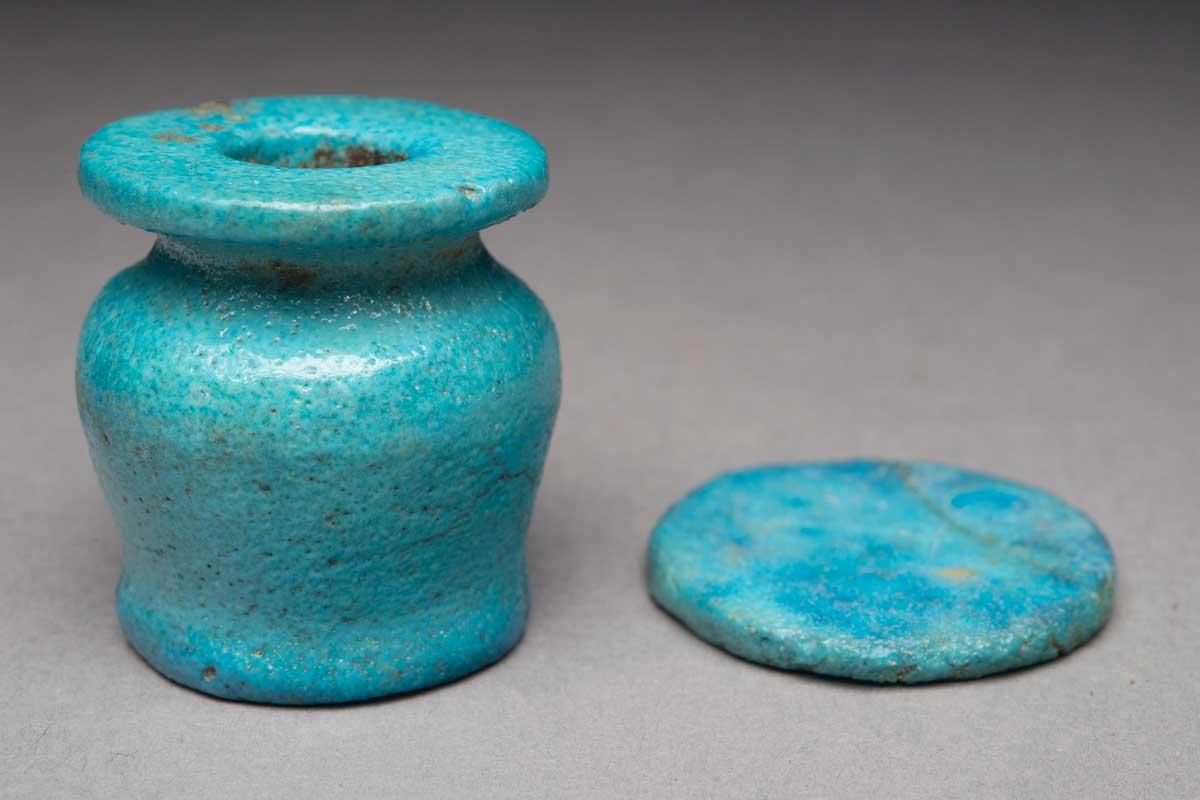Providing for the Afterlife: Ancient Egyptian works from Eton College
Kohl Pot
By Debbie Kim, Ella Cammarato, Meg Swaney and Sanchita Balachandran

Description
This greenish-blue faience kohl pot has a form common to many Egyptian vessels used to hold cosmetics. It has a squat body that flares slightly at the foot and swells at the shoulders tapering in to a narrow neck with a flat, everted rim above. A hole drilled into the top of the vessel facilitated the storage of ground minerals (often a black kohl) used by both Egyptian men and women as eye-paint. However, it is uncertain whether or not this kohl pot was a functional vessel or a model interred as a burial good so that the deceased could have access to cosmetics in the afterlife. This faience kohl pot mimics more costly cosmetic vessels made of hard stone, which the Egyptians adeptly worked into masterful works of art. Though the flat circular lid is presently associated with the pot, it is uncertain whether the two formed a pair in antiquity.
Technical Research
An x-ray of the kohl pot shows the way in which this object was drilled to produce a well for the material it was meant to contain; however, this container is now empty, and it is unclear whether it ever held kohl. As per the study by undergraduates Ella Cammarato and Debbie Kim, this faience object was glazed with a copper-containing colorant, hence its blue color, an observation supported by x-ray fluorescence findings. It is unclear whether the lid and the pot originally belonged together, though further study of their faience compositions may provide more information. The lid has been broken and repaired, though this occurred prior to the object being accessioned into the Eton Collection when a paper sticker was attached over the re-adhered cracks.
